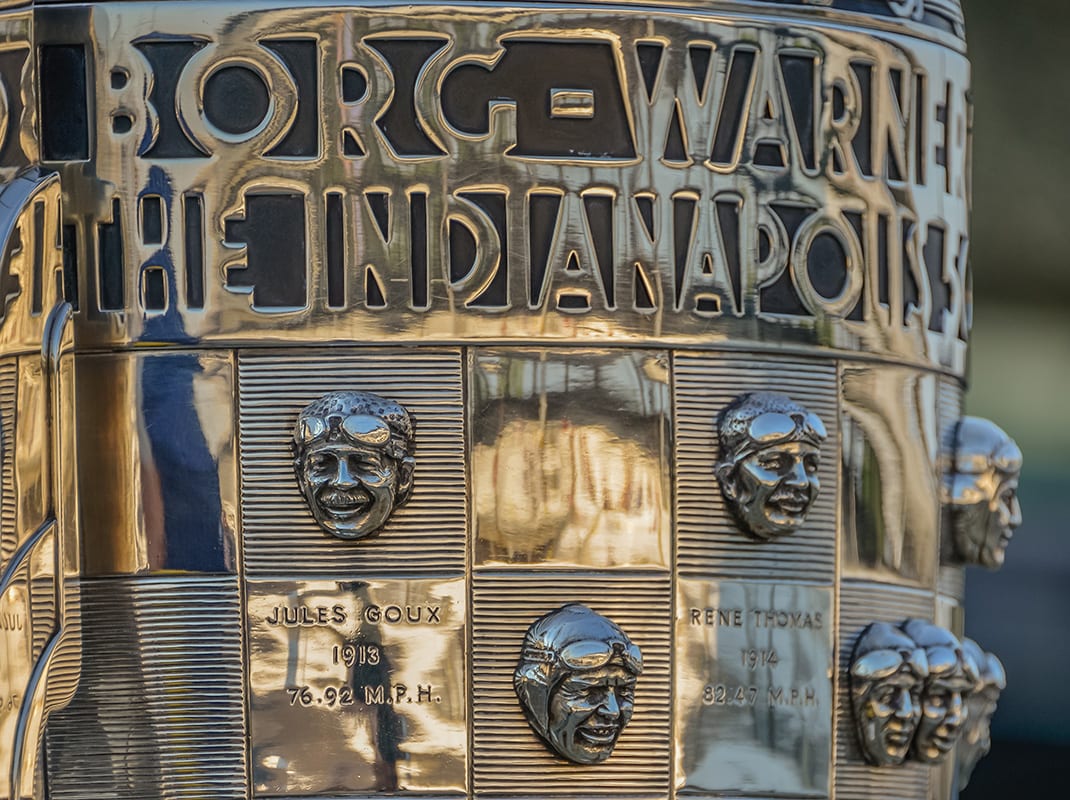INDIANAPOLIS — As one of the world’s greatest sporting events, the Indianapolis 500 is steeped in grandeur, history and tradition.
Its trophy is too.
Many fans have seen the Borg-Warner Trophy when visiting its permanent home at the Indianapolis Motor Speedway Hall of Fame Museum. Others have posed in front of it when strolling the pits in May. Some people have seen it on its occasional trips off the grounds. Many more have seen it on TV, as it’s often shown during the prerace broadcasts and it’s always part of the Indianapolis 500 victory circle celebrations.
A few other sports trophies are more valuable monetarily than the Borg-Warner Trophy, but not many. At $1.5 million, the Borg-Warner Trophy is more valuable than the NFL’s Vince Lombardi Trophy, MLB’s Commissioner’s Trophy, the Larry O’Brien NBA Championship Trophy and even hockey’s Stanley Cup.
One reason is that with the exception of the Stanley Cup, all the others mentioned are produced each year and given to the winners. The Borg-Warner Trophy is not. It is as much a part of the speedway as the pagoda, the scoring pylon and the famous yard of bricks.
Since 1988, a $30,000, 5-pound, 18-inch sterling silver replica of the trophy, a “Baby Borg,” has been given to the winning drivers to keep.

Since 1997, the winning car owners have also taken home a car owner’s version of Baby Borg, called the Borg-Warner Automotive Award. Fred Treadway, Arie Luyendyk’s car owner in 1997, got the first one of those, although Ron Hemelgarn, owner of Buddy Lazier’s 1996 winning car, also received one.
The Borg-Warner Trophy was created for $10,000 in 1935 by the Borg-Warner Automotive Co. (now called BorgWarner), which chose Spaudling-Gorham, Inc. of Chicago to produce it. The head of Gorham’s bronze division, Robert J. Hill, designed it. It is done in Art Deco style, especially noted by the line of race cars near the top, the lettering beneath them and the trophy’s handles on each side.
It is made of sterling silver. Originally it was 51 inches tall and weighed 80 pounds. Currently, with the addition of a base, it’s 5 feet 4.75 inches tall and weighs approximately 110 pounds. The trophy’s body is hollow and the round top is removable.
The trophy was introduced on Feb. 17, 1936, during a dinner at the Roosevelt Hotel in New York City hosted by the track owner at the time, Eddie Rickenbacker. It was presented to the winner of the Indianapolis 500 later that year for the first time, so Louis Meyer was the first winner to have it with him in victory lane.
Its main feature is the bas-relief sculptures of each winning driver’s head since the race began in 1911. It also has each winner’s name, year of victory and average speed below the face in a checkered-flag pattern. The likeness is on a brushed silver square representing the black portion of a checkered flag. The type is done on an unbrushed silver square depicting the white squares.
The original trophy could hold 70 winners. When room ran out on the actual trophy, a base was added in the spring of 1987 so more winners could be shown. That base was filled to capacity in 2003, so in 2004 it was removed and replaced with an even larger base. There is currently room for all winners through 2034.
Sculptor John Grawe created the faces of the 24 winning drivers from 1911 to 1935.The earlier winners’ sculptures are smaller than those of the later ones on the base and more true to the likeness of those depicted.
Click below to keep reading.
